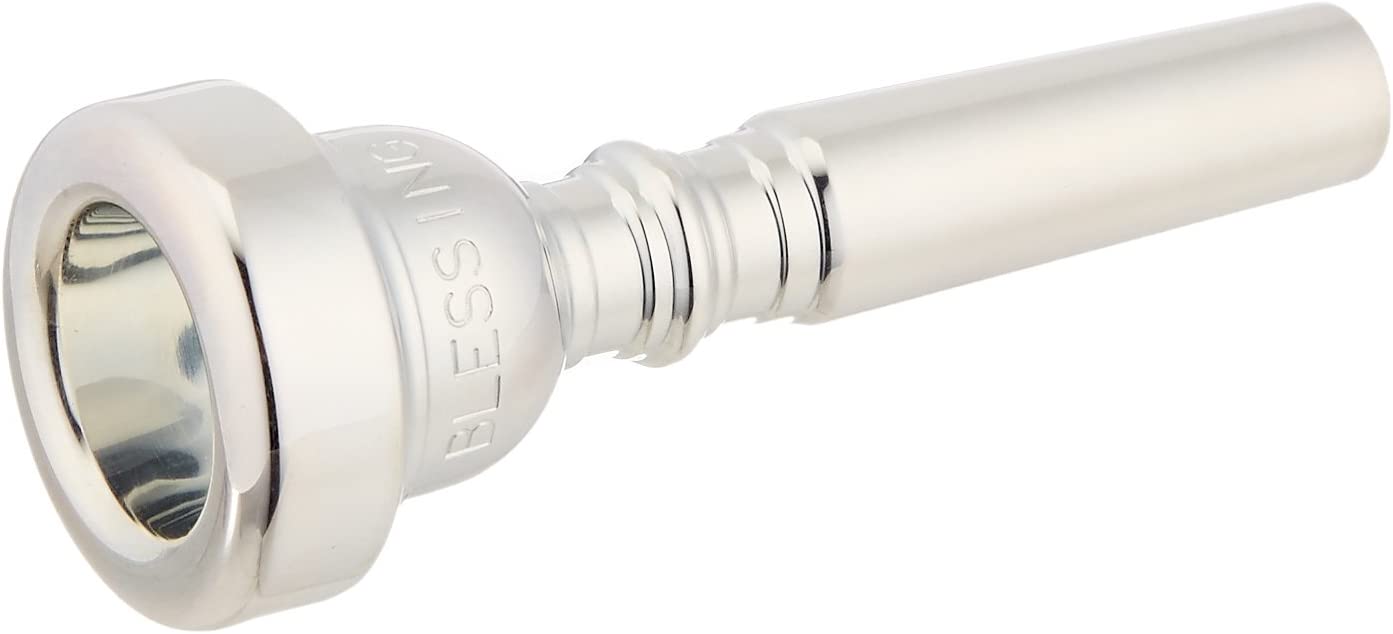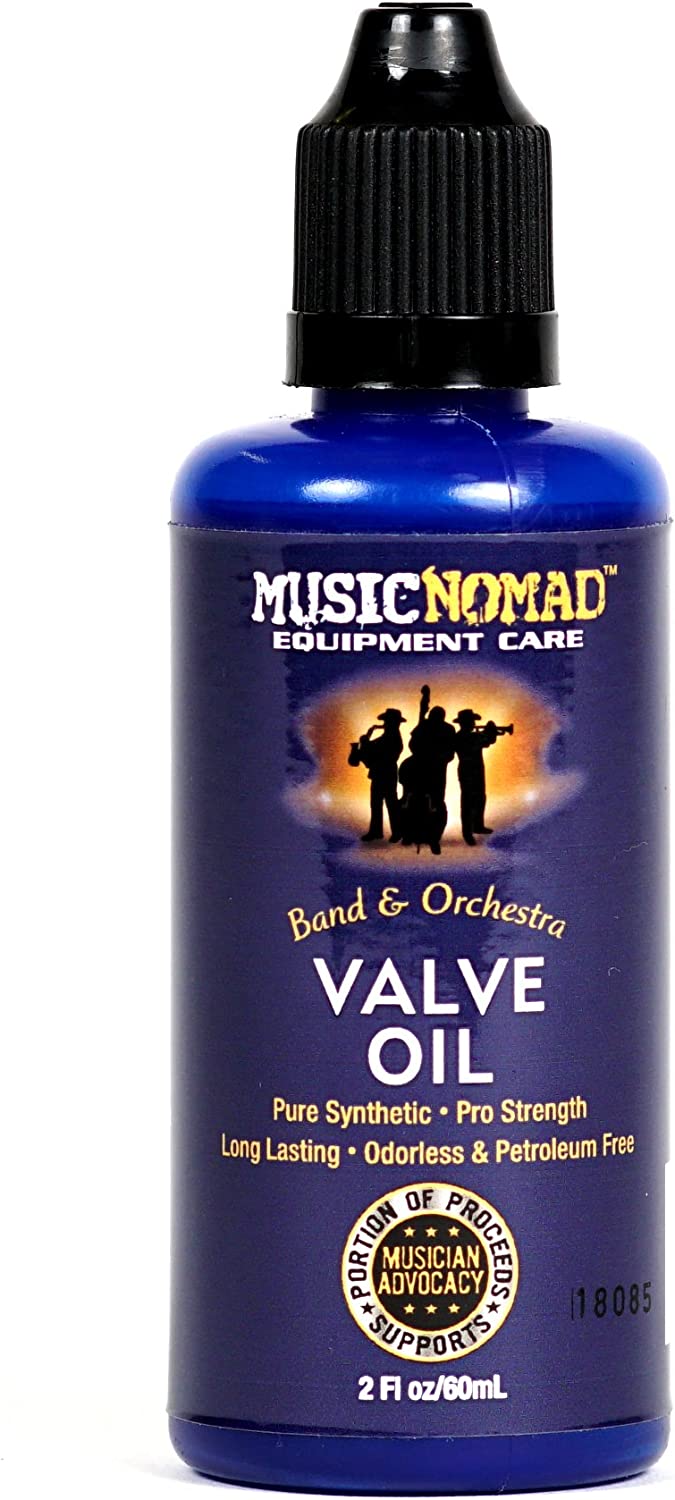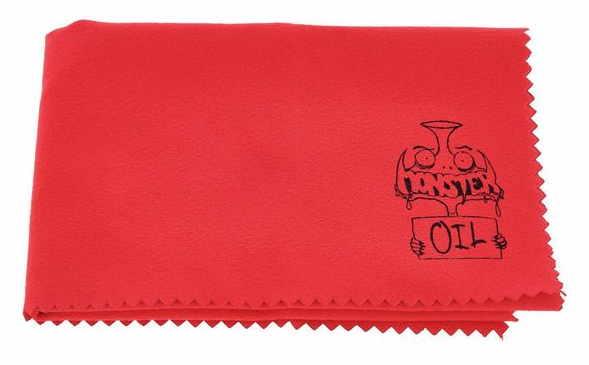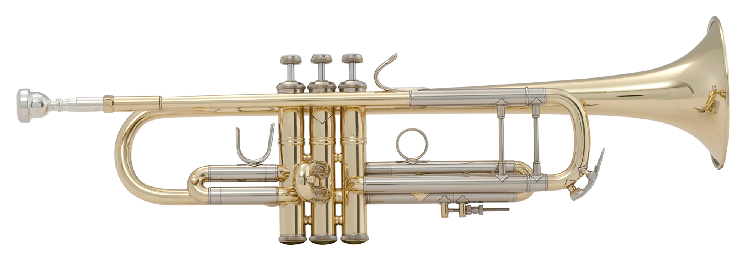- Euphonium vs Baritone Compared - September 5, 2022
- How to Find the Best Contra Alto Clarinet - August 20, 2022
- Mellophone vs Trumpet Compared - August 6, 2022
It’s easy to think a mellophone is just a big trumpet. But appearances can be deceiving. Though you might not be able to tell the difference with a casual glance at a marching band, closer observation of both instruments will reveal several key differences. But before we take that look, let’s list the main differences between the two instruments.
Bottom line up front: While the trumpet is an ancient instrument used in many musical styles, the mellophone is a more modern instrument designed specifically for the marching field.
Still curious? Read on for more!
The Main Differences Between Trumpet vs Mellophone
- The trumpet is in the key of B♭, whereas the mellophone is in the key of F.
- The trumpet has a cylindrical bore, whereas the mellophone has a conical bore.
- The trumpet’s mouthpiece has a shallower more spherical cup, whereas the mellophone uses a deeper conical horn mouthpiece.
- The trumpet is widely used in many musical genres, while the mellophone is rarely found outside marching bands.
- The trumpet is one of the oldest instruments, while the marching mellophone is just a few decades old.
Mouthpieces
Every brass instrument has a cup-shaped mouthpiece into which musicians buzz their lips. That buzzing sets up a resonance in the air column inside the brass instrument, which is amplified into a sound that may be high as a piccolo trumpet or low as a contrabass tuba.
Through careful work on their lip placement and breathing (known as embouchure), a brass player can master even the most difficult passages.
With some exceptions for vintage trumpets and cheap knock-off mouthpieces, every trumpet mouthpiece will fit every trumpet. Marching mellophones can take a trumpet mouthpiece, and many trumpet players who double on mellophone will use their trumpet mouthpiece.
But while you can get sound out of a mellophone using a trumpet mouthpiece, you won’t get the best sound.
A trumpet mouthpiece cup is shallower and more spherical than the conical cup used by horn players. Some mellophone players use a horn mouthpiece with an adapter, but most band directors find this setup compromises the sound. As with everything else in life, it’s best to use the proper tool for the proper job.
Recommendations
Blessing is well regarded for their student brass and the Blessing MPC6MEL Mellophone Mouthpiece is an excellent and very reasonably priced mouthpiece for musicians who want to get the best possible sound out of their mellophone.
Blessing mouthpieces have the trumpet-sized shank required by modern marching mellophones, but the cup is deeper and the rim wider.
If you have been making do with a trumpet mouthpiece or using a horn mouthpiece with an adapter, this mouthpiece will provide a significant improvement in tone and playability. (And if you play trumpet, Blessing also offers a well-reviewed trumpet mouthpiece).
Tubing
In prehistoric times people blew through animal horns or conch shells to produce musical sounds or rally troops. By the Bronze Age, metalworkers were crafting long copper and bronze horns.
The trumpet and mellophone are both refinements on that basic model. The trumpet is the older instrument: explorers found silver and bronze trumpets from 1500 BC in King Tut’s tomb. The mellophone first appeared in 1970 when Reynolds released the ML-13 Marching Mellophone.
The greater the length of tubing in a brass instrument, the lower its resonance. If you unwrapped the two instruments, a mellophone would be approximately 6 feet long, while a trumpet would be 4.5 feet long.
If you unwrapped a French horn you would have twelve feet of tubing, twice as long as a mellophone. When the length doubles, the resonant pinch drops a full octave. A mellophone in F is pitched a fifth below a B♭ trumpet, so it is 1.5 feet longer.
Most student trumpets are in a medium-large .459-.460″ bore, though smaller and larger bores are available. The mellophone has a larger .462-.468″ bore. You might not think 8/100,000 of an inch would make a difference, but it does.
A mellophone’s tone is darker and rounder than the brighter trumpet sound and the mellophone requires more lung power from performers.
A trumpet’s tubing is cylindrical, with its diameter staying the same from the mouthpiece receiver all the way to where it joins the bell. The tubing on a mellophone is conical: it becomes larger in diameter as it moves toward the bell. This gives the mellophone the warmer, more resonant sound we associate with the conical-bore French horn.
Recommendations
Whether you’re playing trumpet or mellophone, regular instrument maintenance is essential. A brass instrument snake like the Montreux 9956 Sonata Trumpet/Cornet Cleaning Brush will get rid of the dirt, debris, and moisture that builds up inside your horn with regular usage.
Run this snake through your trumpet or mellophone and you may be unpleasantly surprised at what you scrape out of the nooks and crannies — and pleasantly surprised by how much better your instrument plays and how much longer it lasts!
Valves
Every horn has a harmonic series of notes that you can play by changing your lip tension. On a horn without valves, you can only play that harmonic series. Medieval musicians carried horns in various keys for different songs.
Later horn players would insert crooks, additional lengths of tubing that went between the mouthpiece and the instrument, to change pitch. But transporting a bunch of horns around is inconvenient, and swapping out crooks mid-performance puts a crimp in your jam session.
By opening and closing lengths of tubing, valves let you play a complete chromatic scale (or, in piano terms, it lets you play every black and every white key). Both the trumpet and mellophone use piston valves.
The first valve lowers the note by one tone and the second by a semitone, while the third valve lowers notes by a tone and semitone.
Because the fingerings are the same on a mellophone and trumpet, it is reasonably easy to switch between the instruments. Your ear may take some time to get used to the difference, though, since the mellophone is pitched a fifth lower than a trumpet.
Both the trumpet and mellophone use piston valves. When a musician pushes a piston valve down, they open a port that connects to a loop of tubing. French horns use rotary valves that operate by opening and closing tubes when the valve is rotated 90 degrees.
While rotary valve trumpets are rarely seen here, they are popular in Eastern Europe and in some Continental symphonic music. But although it was designed to play horn parts, the marching mellophone only comes with piston valves.
Recommendations
Both trumpets and mellophones require regular valve maintenance. MusicNomad’s Band & Orchestra Valve Oil is a synthetic, petroleum-free formulation that protects against rust and corrosion.
Use a couple drops of MusicNomad every time you clean your valves or when you feel your pistons starting to stick. MusicNomad Valve Oil does not produce build-up like some cheaper lubricants. And if you are impressed by MusicNomad’s valve oil, check out their complete line of brass instrument maintenance supplies.
Slides
You may think slides are only found on trombones. But both trumpets and mellophones have multiple slides they use for tuning.
Both instruments have a main tuning slide that a musician can use to raise or lower a note. When the tuning slide is pulled out, the pitch is lowered. When it is pushed in, the pitch becomes higher. With a tuning slide, you can adjust the tuning for variables like temperature or elevation that may make your instrument go off-pitch.
In addition to this, each valve has a slide used to adjust pitch for certain valve combinations. Certain key combinations on both instruments produce notes that are notoriously either flat (too low) or sharp (too high). By adjusting the valve slides while playing, the musician can help bring those notes back in tune.
Recommendations
If your slides get stuck, you may find yourself facing a costly visit to the instrument repair shop. And valve oil is a bad choice for greasing slides. Valve oil is meant to keep your pistons free-moving as you’re pushing down on the keys.
You want your slides to move when you are tuning, but to stay in place while you are playing. For this purpose you need the right lubricant, and many brass musicians swear by Superslick Tuning Slide Grease. Superslick has the proper viscosity for tuning slides, and will make tuning easier on the field or the studio.
Bell
While the resonance of your lips blowing through a brass instrument’s tubing produces sound, it is not particularly loud. There is very little air moving at the end of that tube.
The flared bell at the end of the instrument increases the volume of the sound as it comes out the pipe. The bell has a much larger resonant surface area and sends a much more powerful sound wave through the air.
And the bell’s flare helps bring the overtones in a series into proper tune with the fundamental, providing the sound characteristics that distinguishes a 440hZ A played on the trumpet from a 440hZ A on a tone generator.
A smaller bell will produce a sharper, more focused sound while a larger bell will give you more power on the lower registers and an overall mellower tone. Trumpet bells range from 4.5″ to 5″ with slightly larger and smaller bells available.
The 10 1/2″ bell that is standard on a mellophone has around four times the surface area of the trumpet’s smaller bell. This gives the mellophone a deeper, mellower tone and helps it play the alto lines while the trumpet covers the soprano parts.
Recommendations
You want the bell of your instrument to look as pretty as it sounds. Monster Oil’s Brass Polishing Cloth will keep the sheen on your horn with a double-fleeced design that picks up every bit of dust without scratching the metal.
As an added bonus, Monster Oil is a small business that also sells some excellent valve oil and produces Brass Chats, a series of Youtube interviews with legendary brass players.
Here’s the Brass Chats interview with trumpet legend Arturo Sandeval.
Finding the Best Trumpet and Mellophone
Best Mellophone: King 1121 Ultimate Series Marching F Mellophone
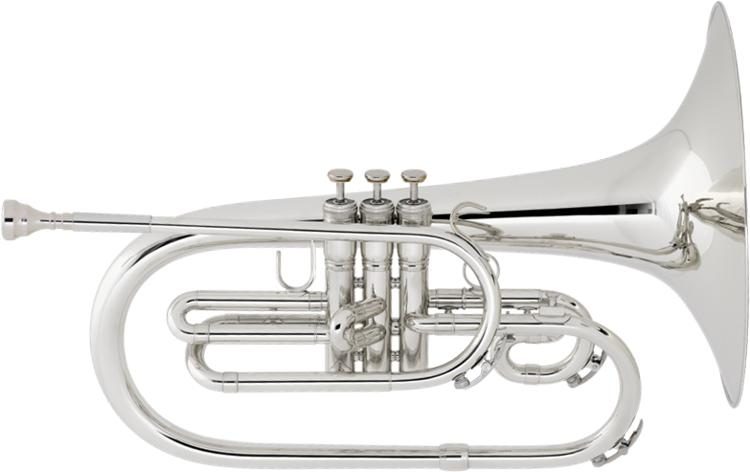
Most of the time marching bands play instruments chosen by their director and purchased by their school or sponsors. But if you are in the market for a marching mellophone, the King 1121 may be the best mellophone on the market.
The 1121’s powerful projection in ensemble or solo ensures the band’s alto voice will be heard even in the largest arena. And there are many other little touches that set the 1121 apart from lesser mellophones.
The 1121’s nickel-plated valves have the durability to withstand long hours of practice and the smooth, quick action you need to sound your best on the field.
The angled mouthpiece helps horn players adjust comfortably to holding their bell in a new position. The marching case is not just heavy-duty, it’s stackable. That comes in very handy when you’re loading instruments on a bus.
The only problem with the 1121 is its price. At over $2,000 retail, King’s flagship marching model is one of the most expensive mellophones on the market. But if your band director has the budget, you may be lucky enough to play one of the finest marching instruments available.
Best Trumpet: Bach Stradivarius 18037
You have many more choices when you are looking for a trumpet, and every professional trumpet player has their own preferences as to what they want in a horn. But the world’s most popular professional trumpet is the Bach Stradivarius 18037.
Musicians rely on the 18037 for jazz, symphonic, studio, orchestral, soundtrack, and chamber music gigs.
The 18037 hits the sweet spot between a bright and warm tone. It can rise to the rafters on an altissimo solo, yet sound velvety-smooth on a soft passage in the lower register. Professional musicians frequently find themselves playing multiple musical genres and the 18037 will shine in all of them.
Because professional musicians are picky about their trumpets, Bach offers a wide range of options for the 18037. You can replace the 18037’s standard #37 bell with a brighter #25 or a darker-sounding #72.
You can get your trumpet with a reverse leadpipe that some trumpeters feel is more free-blowing, or with your choice of several finishes. Whichever one you choose, you won’t go wrong with any Bach Stradivarius trumpet!
Frequently Asked Questions
Answer: Switching from trumpet to mellophone is not difficult. You use the same fingerings, though the mellophone will sound the same note a fifth lower than a trumpet. The mellophone is larger and heavier than a trumpet, which may become challenging during marching maneuvers.
And until you master the mellophone embouchure, you may have difficulties with the mellophone’s lower register. But most trumpet players have very little difficulty learning the mellophone as a second instrument.
Answer: While the terms are often used interchangeably and both play horn parts on the marching field, a marching horn is in B♭ and can only take a French horn mouthpiece.
The mellophone is in F and can take a trumpet mouthpiece, though a mouthpiece designed specifically for the mellophone will give you better results. While many bandleaders find the marching horn’s sound is closer to that of a concert French horn, musicians complain it can be harder to stay in tune on the field with a marching horn.
Answer: Most French horn music is written for its upper register, where the spaces between notes are closer and it is easier to hit a sour note. The mellophone is pitched a full octave above the French horn, so those high notes are much easier to play.
But the mellophone’s sound is not so well suited for concert halls, and there is little demand for mellophone players outside of marching bands.
Conclusion
Both the trumpet and the mellophone require regular practice if you want to sound your best. Running through scales can be (ok, it IS) boring. But it is the only way you can expand your playing range. Playing exercises over and over can feel like torture. But they help teach you proper technique.
The trumpet and mellophone are just two of many instruments in the brass family. If neither appeals to you, you may have better luck with a euphonium, bass trombone, ophiclede, Wagner tuba or something else altogether. Whatever tool you choose to make beautiful music, happy playing!
Looking for more interesting readings? Check out:


